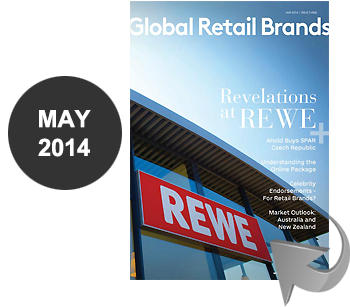 By / Richard Kohn
By / Richard Kohn
Many brands lack competitive, relevant differentiation having failed to carve out a special place in the market for their brand so price becomes the key driver to increase sales: consumers have no reason to think otherwise.
Positioning is the Alpha & Omega of successful marketing >>
How does this play out in the landscape of retail brands? And what does the retail brand marketer need to think about in addition to classical CPG processes? For manufacturers supporting retail brand teams it’s important to have this thinking in mind.
Private label, ‘branding’ used to be easy. Place the retailer’s store brand on the product, place it on the shelf and promote it with a low price sticker.
Good, better, best followed, successfully elevating the quality perception of retail bra
nded products. We now have venture brands, niche products, premium offerings and innovation leadership.
Every year, shows such as Anuga confirm the potential or private label to shift category purchase patterns. As retailers we can move quicker, innovate better and deliver to consumers more effectively.
This strategy is essential in creating value for the retailer: Venture brands margins are higher than generics and enhance the brand equity of the retailer.
As a ‘commissioning buyer’ I am more focused on creating premium products delivering higher overall margins on lower volumes than identifying the lowest cost manufacturer of a quality generic.
Positioning strategies are transforming products into brands, connecting with targeted consumers at an emotional level and increasing store loyalty: Something that will never result from loading stores with manufacturer brands.
To achieve this we have to always ask ourselves, where is the source of our volume. Who’s business will be damaged by our activities? What is the marketing objective of this product introduction? To capture market share, increase overall category sales, increase frequency or share of wallet?
Introduction of retail and/or venture brands is no guarantee of category growth – so someone will suffer.
At the product development stage, the marketer will already have determined
- Target-Customer: There really is no product that’s for everyone.
- Market: What price points, place and quality level is targeted?
- Benefit: What is the differentiating reason for buying this product over the branded competition beyond price?
- Reason-Why: Why should the target-customer believe the differentiation really offers a benefit?
In practice…>>
In practice, as leaders in retail branded propositions, we also need to focus on a wider range of stakeholders when developing our positioning strategies. We need to employ all the classical marketing tools and then overlay an additional range of internal and strategic stakeholders all of whom have an interest in where our venture brand proposition will impact their business.
So next time you pitch a new product to your customers, give some thought to where they can place the product in their assortment, where does it fit within the competitive mix and what is the growth strategy you would propose they use to introduce the product. It will demonstrate a much higher level of understanding of their business drivers and for sure will help someone working at the front line to be more effective in meeting their objectives.
Richard is an expert in global marketing and an acknowledged strategic brand leader. He currently heads the private label division at one of the large st retail pharmacy groups in Europe. He’s held senior management positions in A brand CPG companies and led international marketing and strategy teams across CPG , consumer durable and business services companies. He’s also the European client partner for a leading brand excellence training institute which delivers brand and communications courses to Fortune 500 companies. Richard is dedicated to bringing the discipline and science of brand marketing and marketing communications to private labels, empowering them to cultivate critically essential marketing management competencies to lead them to build leadership brands.





















































